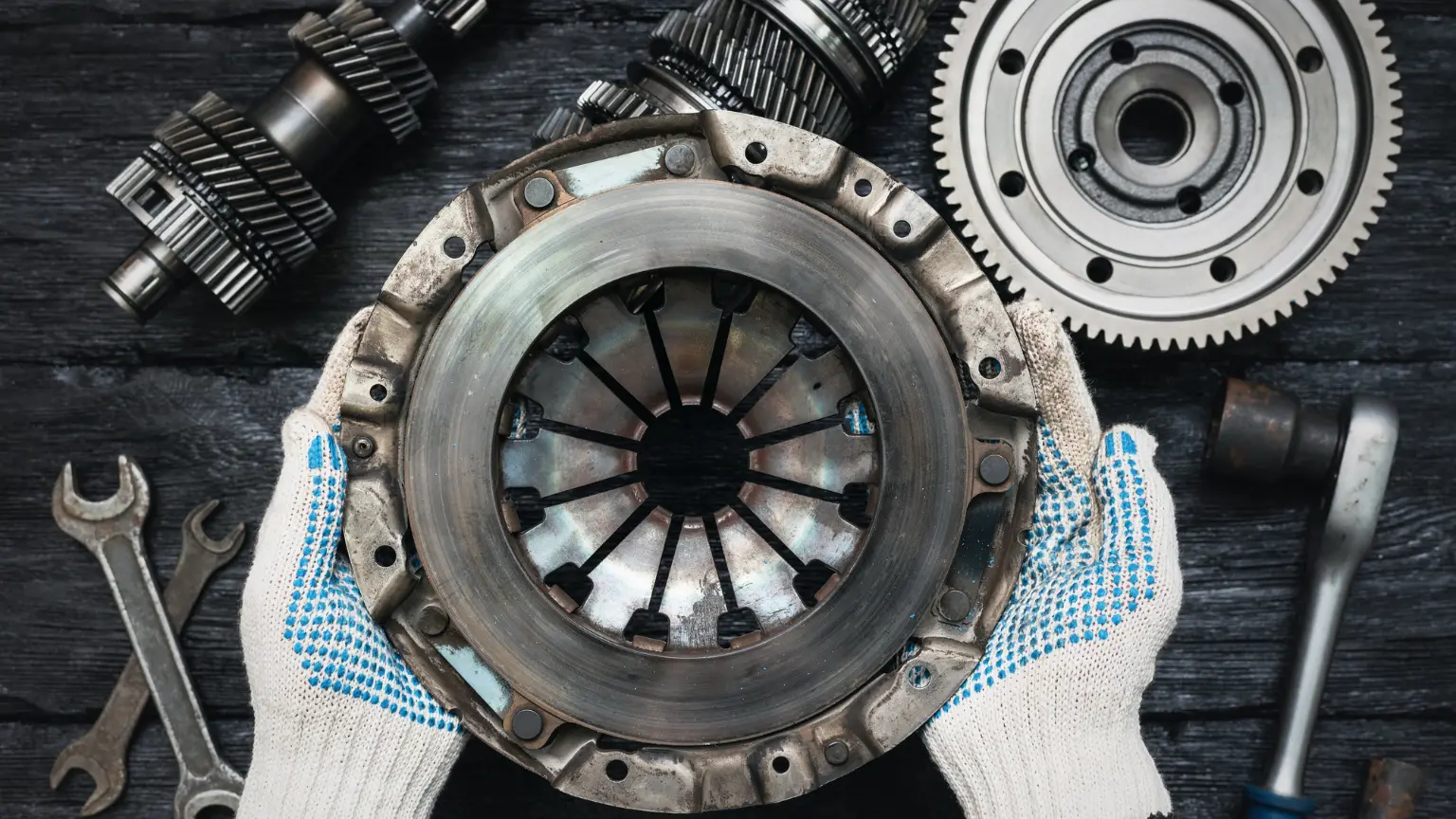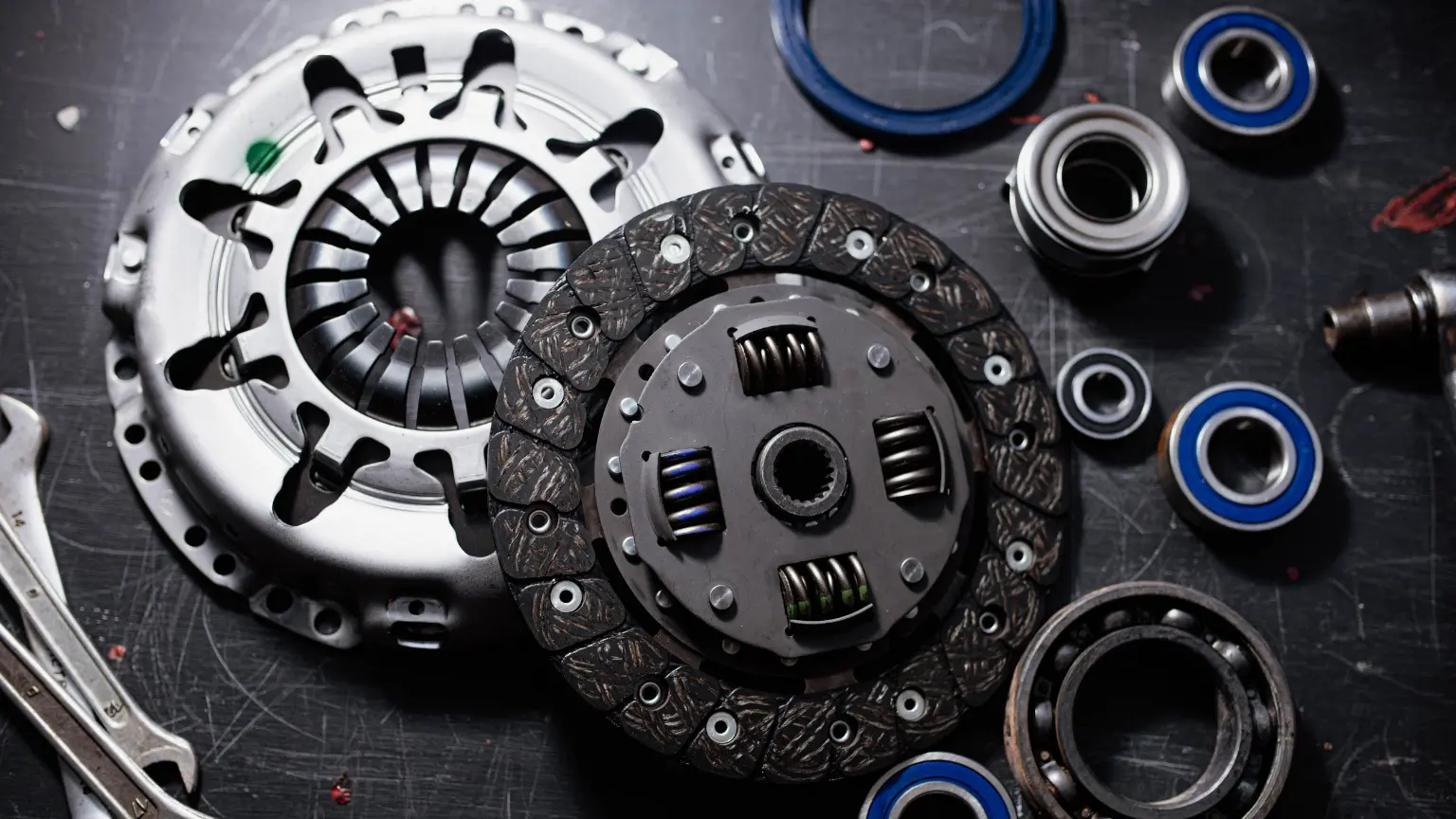Step-by-Step Guide to Dismantling a Vehicle Transmission
Discover how to safely dismantle a vehicle transmission: gather the right tools, prep your workspace, drain fluid, detach linkages, use a transmission jack, and organize parts for efficient gearbox maintenance.

The transmission system is a critical component of your vehicle, often considered the heart of the drivetrain. Its primary role is to transfer the engine's power to the wheels, enabling your car to move at varying speeds. Familiarizing yourself with the transmission dismantling process not only enhances your understanding of how your vehicle operates but also equips you with skills to perform basic car transmission repair tasks. This knowledge can be invaluable, especially in emergencies.
Preparation and Initial Steps
Before beginning the dismantling process, it’s essential to prepare both your workspace and the vehicle. Start by setting up a clean, well-lit, and ventilated area with ample space for tools and removed components. Position the vehicle on a flat, stable surface and ensure it is secure. When draining the transmission fluid, use an appropriate container to catch all fluid and prevent spills. Always wear gloves and safety glasses, as transmission fluid can be hazardous. Promptly clean up any spills and dispose of used fluid in accordance with local environmental regulations to maintain safety and organization throughout the project.
Tips for Dismantling Transmissions
Transmission System Components
A typical vehicle transmission includes parts such as gears, clutches, a bell housing, a torque converter, and a valve body. Each component plays a specific role in the efficient operation of the transmission system, ensuring that the power from the engine is effectively transmitted to the drive wheels. Knowing these parts and their functions helps effectively disassemble and handle them without causing damage, which is vital for successful vehicle gearbox maintenance.
Essential Tools for Safe and Efficient Disassembly
The necessary tools and safety measures required before beginning the transmission dismantling process include workspace preparation and the use of personal protective equipment. Having the right tools for transmission repair can significantly ease the dismantling process. The foundation of your toolkit should include high-quality screwdrivers of various sizes and a torque wrench for accurately tightening or loosening bolts to specified settings. A comprehensive socket set, including deep sockets, will help tackle different bolt sizes and locations. A sturdy transmission jack is indispensable for safely supporting the transmission during removal or installation. This ensures that the car transmission mechanic is protected from potential accidents or damage. Investing in tools specifically designed for automotive work not only ensures reliability but also enhances safety during disassembly.
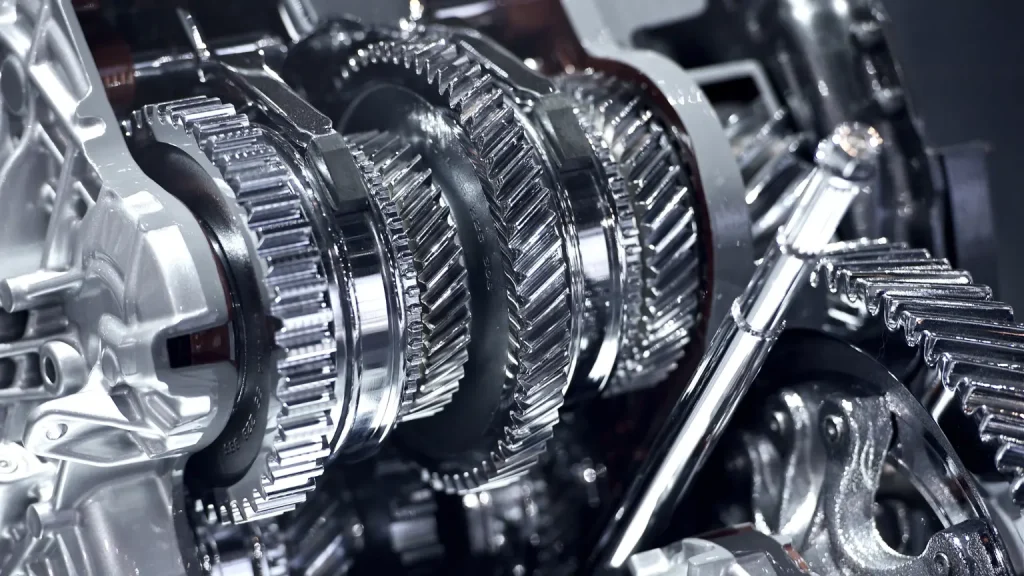
Beyond these basics, specialized tools such as hex keys and snap-ring pliers are essential for handling intricate components in the transmission. Snap ring pliers, for instance, allow you to manage retaining rings without damaging the surrounding parts. Hex keys, often needed for accessing tight or hidden areas, are critical for precision work. Magnetic trays or organizers are also valuable additions to your workspace, as they keep small screws, bolts, and components secure and easily accessible. Having these on hand streamlines the process, reduces frustration, and minimizes the risk of misplacing vital parts during the disassembly.
Creating a Safe and Organized Workspace
Setting up a safe and organized workspace is imperative when tackling a project like dismantling a vehicle transmission at home. The area should be spacious enough to store the vehicle, all necessary tools, and the transmission components once they are removed. Proper lighting and ventilation are necessary to maintain visibility and reduce health hazards from fumes or dust. A clean floor space with a sturdy workbench will provide a secure environment for keeping organized and preventing any parts from becoming misplaced or damaged.
Draining Transmission Fluid and Initial Preparations
Position a suitable container under the transmission's drain plug, remove the plug, and let the fluid drain completely. This step prevents messes during the transmission disassembly and allows for a clearer view and access to the transmission components. Once drained, wipe the surrounding area and parts to avoid slippage or contamination of clean parts.
Disconnecting and Removing the Transmission
Detaching Linkages and Electrical Connections
Before you can remove the transmission, it's important to detach all linkages and electrical connections. Start by disconnecting the battery to ensure safety. Then, carefully separate the gear selector linkage and speed sensor cables. Each connection should be tagged or marked for easy identification during reassembly. Ensuring that all connections are securely disconnected prevents accidental damage to the electrical components and facilitates a smoother removal process.
Using a Transmission Jack for Safe Removal
Utilizing a transmission jack is essential for safely lowering the transmission from the vehicle. Before placing the jack under the transmission, ensure that it's properly centered to balance the weight. The jack should be adjusted to touch the transmission's pan without applying upward pressure. As you slowly loosen the mounting bolts, keep a steady hand on the transmission to stabilize it, adjusting the jack as needed to manage the weight and prevent any sudden shifts that could lead to damage or injury.
Removing the Gearbox from the Vehicle
The actual removal of the gearbox should be done with great caution. After securing the transmission on the jack, carefully wheel it out from under the vehicle. This step might require slight adjustments to the car's position or the jack to ease the transmission out smoothly. It's crucial to keep the path clear of any obstructions and to move slowly to monitor the stability of the gearbox as it's being removed.
Tips for Handling Heavy Components
Handling heavy components like a transmission requires more than physical effort; it demands meticulous planning and adherence to safety guidelines. In a professional workshop or a home garage, overlooking these critical steps can lead to injuries and equipment damage. Below, we delve deeper into effective strategies to handle heavy components safely and efficiently:
- Use Appropriate Lifting Techniques: Employing proper lifting techniques is essential to prevent injuries when handling heavy components. Begin by positioning yourself close to the object to minimize strain. Keep your feet shoulder-width apart for balance and stability. Bend at your knees rather than your waist, engaging your leg muscles to lift. Maintain a straight back throughout the process to avoid straining your spine. Secure a firm grip on the component, ensuring it’s stable before you begin to lift. Move slowly and deliberately, avoiding any jerking motions. If the component feels too heavy or unstable, don’t hesitate to stop and seek assistance to avoid potential harm.
- Employ Assistive Devices: Tools such as engine hoists, transmission jacks, and dollies are designed to make these tasks easier and safer. These devices not only reduce the physical burden on your body but also offer greater precision in positioning and securing the component. For example, a transmission jack provides stability and balance, allowing you to align components accurately during installation. Regularly inspect these tools to ensure they are in good working condition, as malfunctioning equipment can lead to accidents.
- Secure the Load: Securing the load properly is crucial to preventing accidents during transport or installation. Begin by ensuring the component is evenly balanced on the assistive device. Use heavy-duty straps, chains, or clamps to anchor it firmly. Double-check all fastenings to confirm they are tight and won’t loosen under movement. A securely fastened load minimizes the risk of shifting or tipping, which could damage the component or endanger those handling it. Before lifting or moving, give the load a gentle nudge to test its stability. Taking these precautions ensures the component remains securely in place throughout the process.
- Clear the Path: Planning your route and ensuring it is clear of obstacles is an often-overlooked step in safe handling. Remove tools, debris, or any other potential tripping hazards from the work area. Pay attention to uneven flooring, narrow passages, or overhead obstructions that might complicate the task. Mapping out your path in advance helps you anticipate and address challenges, reducing the likelihood of sudden movements or adjustments that could destabilize the load. If possible, use visual markers or tape to outline the safest route, ensuring everyone involved in the task is on the same page.
- Work with a Partner: Handling heavy components alone is risky and unnecessary when help is available. Working with a partner allows for shared responsibility, reducing the strain on each individual. Your partner can assist in balancing the load, providing additional strength for lifting, or guiding the load into position. Communication is key during this process; establish clear signals or verbal instructions to coordinate your movements. A second set of eyes can also identify potential hazards or adjustments that might be needed.
Adhering to these steps not only protects your physical well-being but also preserves the integrity of the components and equipment involved. Proper planning, communication, and the use of suitable tools can turn a challenging task into a manageable one. Always prioritize safety to ensure a successful and injury-free experience.
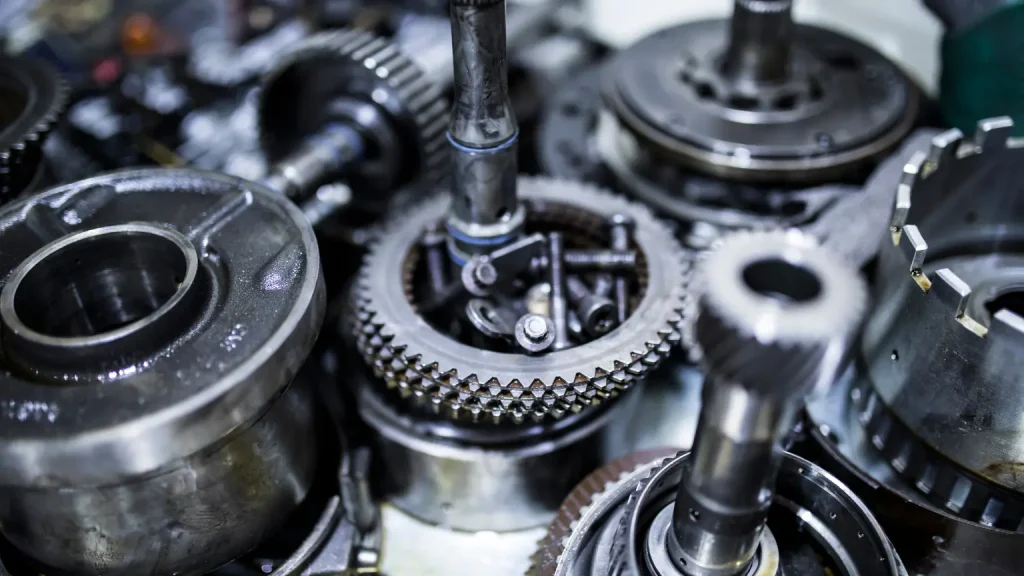
Step-by-Step Transmission Disassembly Process
Identifying and Removing Gears and Bearings
Disassembling gears and bearings is a meticulous process that begins with their identification and cataloging. Each gear and bearing should be carefully removed using the appropriate pullers and tools designed for this purpose. Pay close attention to their order and orientation, as this will be crucial for reassembly. If you're not using a service manual, taking photos or making diagrams is advisable, as they can serve as a reference when putting these components back together.
Carefully Disassembling the Torque Converter
Remove the converter from the transmission and drain any remaining fluid. Inspect the converter housing for any wear or damage before carefully opening it to access the internal parts. Remember, this component should be handled delicately to avoid damaging the fins and internal mechanisms critical for its operation.
Inspecting and Removing Seals and Bushings
Seals and bushings are critical for preventing leaks and ensuring smooth operation of the transmission system parts. During disassembly, each seal and bushing should be carefully inspected for signs of wear or damage. Here's a process for handling these components:
- Visual Inspection: Look for cracks, tears, or irregularities in seals, which might indicate deterioration. Similarly, inspect bushings for uneven wear patterns, which could signal misalignment or excessive friction during operation. Be attentive to any embedded debris or foreign particles that could compromise the component’s integrity. A detailed visual inspection can help identify early signs of failure, allowing for timely replacements and reducing the risk of larger mechanical issues.
- Measurement for Wear: Accurately measuring seals and bushings is critical to determine whether they meet the manufacturer’s specifications. Use precision tools like calipers to check the thickness, inner diameter, and outer diameter of each component. Document and compare these measurements with the tolerances outlined in the transmission’s service manual. Even minor deviations can affect performance, so replace seals or bushings outside the recommended ranges.
- Careful Removal: Removing seals and bushings without causing damage to the surrounding surfaces requires the right tools and techniques. Use specialized tools such as seal pullers, bushing drivers, or flat-head screwdrivers designed for this purpose. Insert tools gently to avoid scratching or denting the housing or shaft surfaces, as even minor damage can lead to improper seating of new components. Work slowly and methodically to keep the seals and bushings intact, allowing for a better understanding of their condition during inspection.
- How to Clean Transmission Parts: After removing the seals and bushings, clean the housing areas thoroughly to eliminate debris, oil residues, or worn material fragments. Use lint-free cloths or brushes alongside a degreaser to achieve a spotless surface. Pay close attention to grooves or crevices where remnants might accumulate. Any leftover debris can compromise the fit and function of new components, leading to premature wear or leakage. A clean surface ensures a seamless installation process and enhances the performance of replacement parts.
- Preparing for Replacement: Before installing new seals and bushings, prepare the housing and shafts according to the manufacturer’s guidelines. This often involves applying a thin lubricant layer to facilitate easier installation and reduce the risk of damage during placement. Align the new components carefully to avoid misfits or distortions that could impact their functionality. Ensuring the parts are correctly oriented and securely seated guarantees optimal performance and longevity of the transmission system.
By following these steps, you can ensure the effective inspection and replacement of seals and bushings, which are vital for the integrity of your transmission system. Thorough attention to detail and adherence to manufacturer guidelines can significantly enhance the reliability and lifespan of the components, minimizing the risk of future issues. There will also be recommended actions after transmission extraction and disassembly, such as consulting experts, choosing reliable repair shops, and proper post-removal care.
Avoiding Common Mistakes During Transmission Disassembly
Proper Labeling and Organization of Parts
One must understand the best practices for labeling and organizing parts, avoiding common mistakes, and ensuring a smooth reassembly or repair process. Proper labeling and organization of parts are paramount during disassembly to facilitate an error-free reassembly. Each component, no matter how small, should be labeled with tags that note its position and orientation within the transmission. Using a system of containers or dividers to keep parts sorted by their assembly groups can also prevent confusion and ensure that no part is misplaced or incorrectly installed later. A meticulous approach reduces the risk of reassembly errors and helps maintain the integrity of rebuilding vehicle transmissions.
Knowing When to Seek Expert Advice
Dismantling a transmission is a complex process that can sometimes present unexpected challenges. Knowing when to pause and seek expert advice is crucial, especially when encountering parts that are unusually difficult to remove or when the disassembly does not proceed as planned. Consulting a transmission specialist or referring to detailed service manuals can provide guidance and prevent costly mistakes. Sometimes, leveraging professional transmission repair services is more prudent than risking further damage through inexperienced handling.
Choosing a Reliable Transmission Repair Shop
When the scope of transmission repair exceeds your comfort zone, finding a reliable transmission repair shop becomes essential. Look for shops with certified technicians who specialize in transmission work. Check reviews and ratings from previous customers to measure the quality of service and customer satisfaction. A trustworthy shop will provide a transparent service quote and a detailed explanation of the necessary repairs. Opting for specialists who guarantee their work can also provide peace of mind, ensuring that the transmission is serviced correctly and durably.
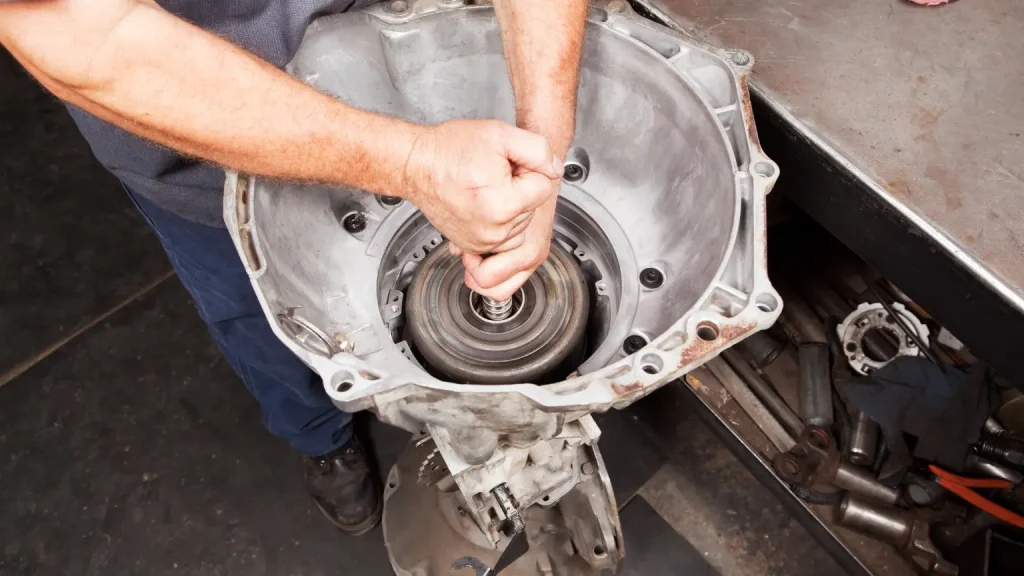
Addressing Obstacles During Transmission Disassembly
During transmission disassembly, several common challenges can complicate the process and require thoughtful solutions. Rusted or seized bolts are a frequent obstacle, often caused by years of exposure to moisture and road debris. Applying a penetrating lubricant and allowing it to soak can help loosen these stubborn fasteners, while bolt extractors may be necessary for complicated cases. Another challenge is limited space under the vehicle, which can make it difficult to access certain bolts or components. Using compact tools and adjusting the height of your jack can create more working room, and planning your movements helps prevent awkward or unsafe positions. Finally, handling heavy transmission components poses a risk of injury and equipment damage. Employing proper lifting techniques, using assistive devices such as transmission jacks, and working with a partner can greatly reduce these risks. Addressing these obstacles with preparation and the right tools ensures a safer and more efficient disassembly process.
Frequently Asked Questions
Inspecting and troubleshooting your transmission during disassembly is crucial for identifying issues early and ensuring a successful repair or rebuild. Below are frequently asked questions to guide you through inspecting components, spotting fluid leaks, and recognizing signs of wear or malfunction.
How can I inspect transmission components for damage during disassembly?
Carefully examine each part for cracks, chips, excessive wear, or discoloration. Use a bright light and magnifier if needed, and compare components to manufacturer specifications for signs of abnormal damage.
What are common signs of fluid leaks in a transmission?
Look for wet, oily residue around gaskets, seals, and mating surfaces. Stains or pooling fluid beneath the transmission or on nearby components also indicate possible leaks that require further investigation.
How do I check for worn gears or bearings?
Inspect gears for pitting, chipped teeth, or uneven surfaces. Rotate bearings by hand; roughness, noise, or visible scoring are signs of wear and indicate the need for replacement.
What should I look for in seals and bushings?
Check seals for cracks, hardening, or deformation. Inspect bushings for oval shapes, scoring, or excessive looseness, as these issues can lead to leaks or improper gear alignment.
How can I identify malfunctioning clutch plates or bands?
Examine clutch plates and bands for discoloration, burning, or excessive thinning. Warped or broken components signal overheating or slippage and should be replaced.
What does discolored or burnt transmission fluid indicate?
Fluid that is dark, smells burnt, or contains metal shavings suggests overheating, internal wear, or contamination. This often points to deeper transmission issues needing attention.
Successfully dismantling a vehicle transmission requires attention to detail, proper tools, and an organized approach. Remember, the goal is to take the transmission apart and ensure it can be reassembled effectively or that all components are ready for professional servicing.
Follow a maintenance program
Ante gravida id aenean quis egestas risus nam amet nullam leo diam diam aliquam eu eu malesuada arcu rhoncus suspendisse nulla mattis ut amet sagittis in justo egestas.

search for a trusted mechanic
Lorem ipsum dolor sit amet, consectetur adipiscing elit lobortis arcu enim urna adipiscing praesent velit viverra sit semper lorem eu cursus vel hendrerit elementum morbi curabitur etiam nibh justo, lorem aliquet donec sed sit mi dignissim at ante massa mattis.
- Neque sodales ut etiam sit amet nisl purus non tellus orci ac auctor
- Adipiscing elit ut aliquam purus sit amet viverra suspendisse potent
- Mauris commodo quis imperdiet massa tincidunt nunc pulvinar
- Excepteur sint occaecat cupidatat non proident sunt in culpa qui officia
Check the air pressure in your tires
Vitae congue eu consequat ac felis placerat vestibulum lectus mauris ultrices cursus sit amet dictum sit amet justo donec enim diam porttitor lacus luctus accumsan tortor posuere praesent tristique magna sit amet purus gravida quis blandit turpis.
Review your suspension frequently
At risus viverra adipiscing at in tellus integer feugiat nisl pretium fusce id velit ut tortor sagittis orci a scelerisque purus semper eget at lectus urna duis convallis. porta nibh venenatis cras sed felis eget neque laoreet suspendisse interdum consectetur libero id faucibus nisl donec pretium vulputate sapien nec sagittis aliquam nunc lobortis mattis aliquam faucibus purus in.
- Neque sodales ut etiam sit amet nisl purus non tellus orci ac auctor
- Adipiscing elit ut aliquam purus sit amet viverra suspendisse potent
- Mauris commodo quis imperdiet massa tincidunt nunc pulvinar
- Excepteur sint occaecat cupidatat non proident sunt in culpa qui officia
Service your vehicle as regularly as posible
At risus viverra adipiscing at in tellus integer feugiat nisl pretium fusce id velit ut tortor sagittis orci a scelerisque purus semper eget at lectus urna duis convallis. porta nibh venenatis cras sed felis eget neque laoreet suspendisse interdum consectetur libero id faucibus nisl donec pretium vulputate sapien nec sagittis aliquam nunc lobortis mattis aliquam faucibus purus in.
“Nisi quis eleifend quam adipiscing vitae aliquet bibendum enim facilisis gravida neque velit euismod in pellentesque”
Conclusion
Eget lorem dolor sed viverra ipsum nunc aliquet bibendum felis donec et odio pellentesque diam volutpat commodo sed egestas aliquam sem fringilla ut morbi tincidunt augue interdum velit euismod eu tincidunt tortor aliquam nulla facilisi aenean sed adipiscing diam donec adipiscing ut lectus arcu bibendum at varius vel pharetra nibh venenatis cras sed felis eget.

